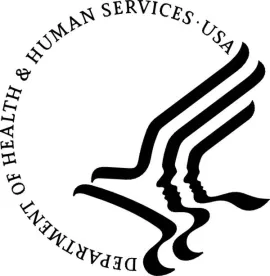On November 20, 2020, the Department of Health and Human Services (HHS) Office of Inspector General (OIG) issued final rules to implement the new exception provided under the Anti-Kickback Statute and the Civil Monetary Penalty (CMP) Rules regarding the provision of telehealth technologies to certain patients receiving in-home dialysis services. In its final rule, the OIG defined what constitutes “telehealth technologies” more broadly than in its proposed rule, but otherwise chose to track the conditions for the exception contained in the underlying statute and not to implement any of the additional conditions that were included in the proposed rule.
Background
On October 17, 2019, the OIG published a notice of proposed rulemaking (Proposed Rule) that, among other things, sought to amend the definition of “remuneration” under the beneficiary inducements CMP regulations at 42 C.F.R. 1003 by codifying the statutory exception for “telehealth technologies” furnished to certain in-home dialysis patients. On November 20, 2020, the OIG finalized its proposal regarding the exception with modifications. The final rule was published in the Federal Register on December 2, 2020 (Final Rule) and becomes effective on January 19, 2021. The beneficiary inducement provisions of the CMP prohibit any person from offering remuneration to Medicare or Medicaid beneficiaries that the offeror knows or should know are likely to influence the selection of particular providers, practitioners, or suppliers. Prior to the enactment of the Bipartisan Budget Act of 2018, no exception existed for the provision of telehealth technologies to patients receiving in-home dialysis services. Section 1128A(i)(6)(J) of the Social Security Act established the following exception to the definition of “remuneration”:
the provision of telehealth technologies (as defined by the Secretary) on or after January 1, 2019, by a provider of services or a renal dialysis facility (as such terms are defined for purposes of title XVIII) to an individual with end stage renal disease who is receiving home dialysis for which payment is being made under part B of such title, if: (i) the telehealth technologies are not offered as part of any advertisement or solicitation; (ii) the telehealth technologies are provided for the purpose of furnishing telehealth services related to the individual’s end stage renal disease; and (iii) the provision of the telehealth technologies meets any other requirements set forth in regulations promulgated by the Secretary.
Final Rule
The Final Rule amends the definition of “remuneration” in the CMP regulations to incorporate the new statutory exception regarding the provision of telehealth technologies. Specifically, the Final Rule adds new 42 C.F.R. 1003.110(10) to the definition of “remuneration” that permits the provision of telehealth technologies by a provider, physician or renal dialysis facility to an individual with end-stage renal disease (ESRD) who is receiving in-home dialysis paid for by Medicare Part B, provided the donation of the telehealth technologies meets the OIG’s conditions.
The provision of “telehealth technologies” is defined for these purposes to mean “hardware, software, and services that support distant or remote communication between the patient and provider, physician, or renal dialysis facility for diagnosis, intervention, or ongoing care management.” As set forth in the Final Rule, the provision of telehealth technologies will not constitute prohibited remuneration under the new exception if all of the following conditions are met:
-
The technologies are provided to an individual with ESRD
-
The individual is receiving in-home dialysis care
-
The in-home dialysis care is being paid for under Medicare Part B
-
The technologies are provided by the provider of services, physician or the renal dialysis facility that (i) is currently providing the in-home dialysis, telehealth services or other ESRD care to the individual, or (ii) has been selected or contacted by the individual to schedule an appointment or provide ESRD related services
-
The technologies are not offered as part of an advertisement or solicitation
-
The technologies are provided for the purpose of providing telehealth services related to the individual’s ESRD
The Final Rule does not include most of the additional conditions that had been proposed in the Proposed Rule. Rather, the Final Rule is generally limited to the conditions included in the statutory exception. In addition, the OIG provided guidance regarding the “telehealth technologies” exception to the CMP regulations in its release adopting the Final Rule. The significant guidance is summarized below:
A “Technology Agnostic” Definition of Telehealth Technologies
-
The Final Rule broadly defines “telehealth technologies” to mean any “hardware, software, and services that support distant or remote communication between the patient and provider, physician, or renal dialysis facility for diagnosis, intervention, or ongoing care management.” This definition includes technologies that allow for two-way, real-time interactive communication as well as telephones, facsimile machines, electronic mail systems, internet service, data plans and technologies that enable asynchronous communications between the patient and a practitioner, in each case as long as they support provider and patient communication for diagnosis, intervention or ongoing care management. Further, the OIG indicated that the examples provided are not intended to be exhaustive.
-
The definition of “telehealth technologies” focuses on the functionality of the technology used to support the telehealth services rather than on specific types of technology. The OIG believes this broader definition will provide flexibility to providers, physicians and renal dialysis facilities to best determine what telehealth technology is needed for the purpose of furnishing telehealth services related to an individual’s ESRD.
Permitted Donors of Telehealth Technologies
-
The OIG distinguished between patient-initiated contact and contact initiated by a provider, facility or physician with a new patient (or to the patient’s case manager) soliciting the patient to elect in-home dialysis or to switch providers, coupled with an offer of telehealth technologies, clarifying that provider-initiated outreach does not fall within the exception.
-
The Final Rule added physicians as a type of practitioner that can donate telehealth technologies to a patient, but the physician must meet the definition of “physician” under Section 1861(r) of the Social Security Act and be providing in-home dialysis, telehealth services or other ESRD care to the patient.
Prohibition of Advertisement or Solicitation
-
The terms “advertisement” and “solicitation” are interpreted consistent with their common usage in the health care industry and the OIG acknowledged that not all information provided to patients about their health care options constitutes advertising or solicitation.
What Constitutes “Provided for the Purposes of Furnishing Telehealth Services Related to” ESRD Services
-
The definition of “telehealth technologies” includes technologies that are multifunctional and may have purposes in addition to the furnishing of telehealth services related to the individual’s ESRD. To illustrate, the OIG indicated the exception could protect a tablet used by a patient to access telehealth services for their ESRD care even though the tablet has other purposes or functionalities as long as the provision of such technology meets all the conditions of the exception.
-
The value of the telehealth technologies provided to a patient could be a fact used to assess whether the provision of such technology meets the requirement that such technologies are provided for the purpose of furnishing telehealth services related to the individual’s ESRD. The OIG cautioned that the provision of technology of excessive value could indicate that the technology is not being provided for the purpose of furnishing telehealth services related to the individual’s ESRD and could also indicate that the technology is part of a prohibited advertisement or solicitation. The OIG provided the following two examples of where excess technology could be problematic:
-
If a $50 monthly data plan would be adequate for the connection needed for the patient, the provision of a $100 per month plan might raise concerns that the data plan is being offered for a purpose other than access to telehealth services.
-
If a donor knows the patient already has a data or internet service plan and furnishes a plan anyway, a question could arise about the purpose of the remuneration to the patient.
-
-
An assessment of whether telehealth technologies would be duplicative of technology a patient already owns may be a fact used to determine whether the provision of such technology meets the requirement that such technologies are provided for the purpose of furnishing telehealth services related to the individual’s ESRD. For example, if a patient has existing telehealth technology and is already able to receive telehealth services, providing the patient with additional telehealth technology may not have the purpose of furnishing telehealth services. However, if a patient’s existing technology does not have all the necessary components or capabilities to support the telehealth services, then those facts are favorable in determining that the provision of the telehealth technology to that patient meets the requirement that such technologies are provided for the purpose of furnishing telehealth services.
-
The exception applies to all types of telehealth technologies that are provided for the purposes of furnishing remote services (e.g., telehealth services, virtual check-in services, e-visits, remote care management and remote patient monitoring) and need not be provided for the purpose of furnishing a telehealth service that is reimbursable under Medicare Part B. However, if the provider is seeking to bill Medicare for telehealth services that use these telehealth technologies, those services still must meet all Medicare requirements.
-
Although not required, the OIG suggested that it would be a best practice for the donor to document how the telehealth services are related to the individual’s ESRD care, such as to management of care, monitoring of health or treatment.
Ownership and Retrieval of Technology
-
The provider, physician or facility is not required to retain ownership of the telehealth technology or retrieve the telehealth technology from the patient upon conclusion of services. However, if the individual is no longer receiving in-home dialysis treatment reimbursable by Medicare Part B or if the individual is no longer using the telehealth technology for ESRD-related telehealth services, then termination of technology-related services (e.g., recurring monthly data plan fees or applications that require ongoing subscription fees) would need to occur.





 />i
/>i

